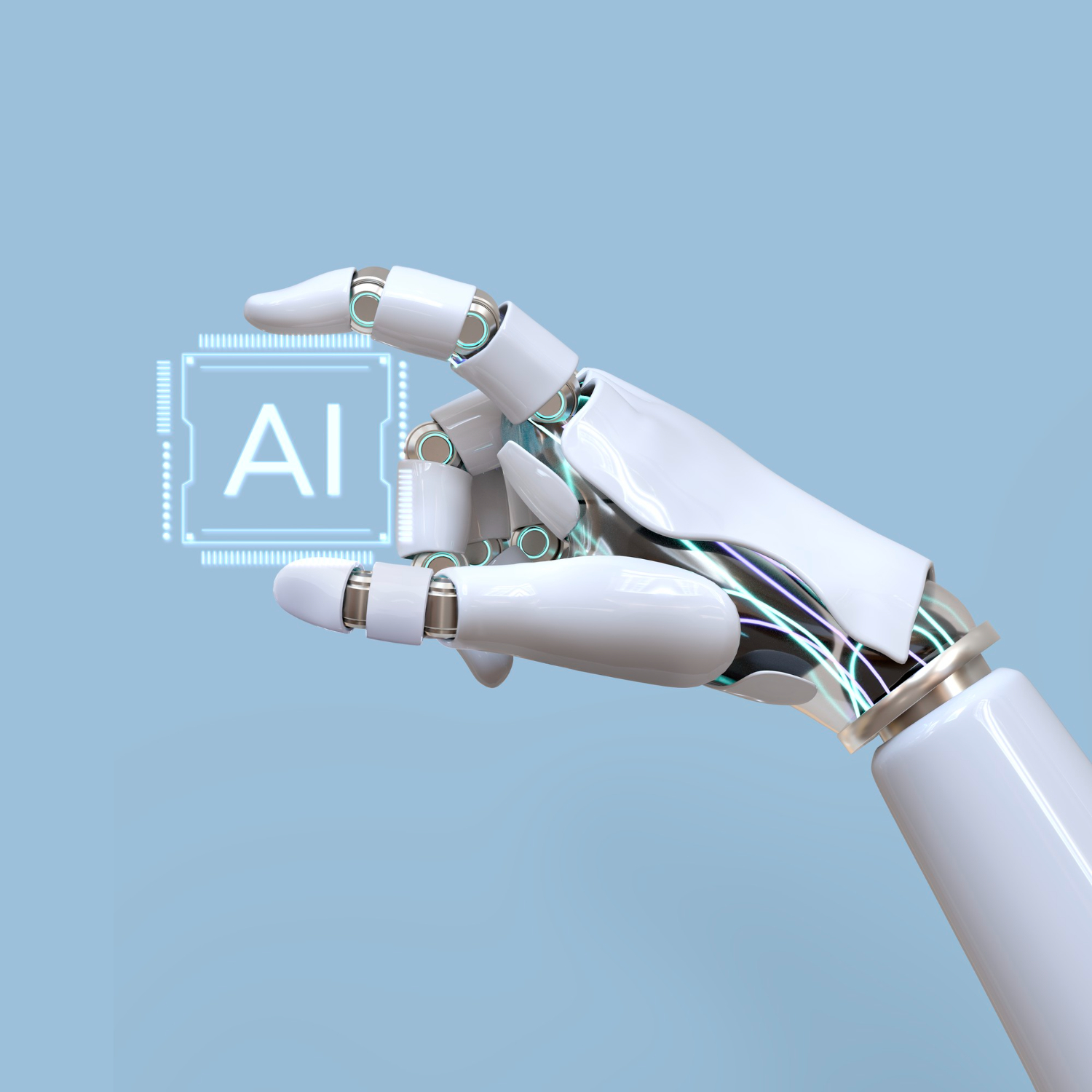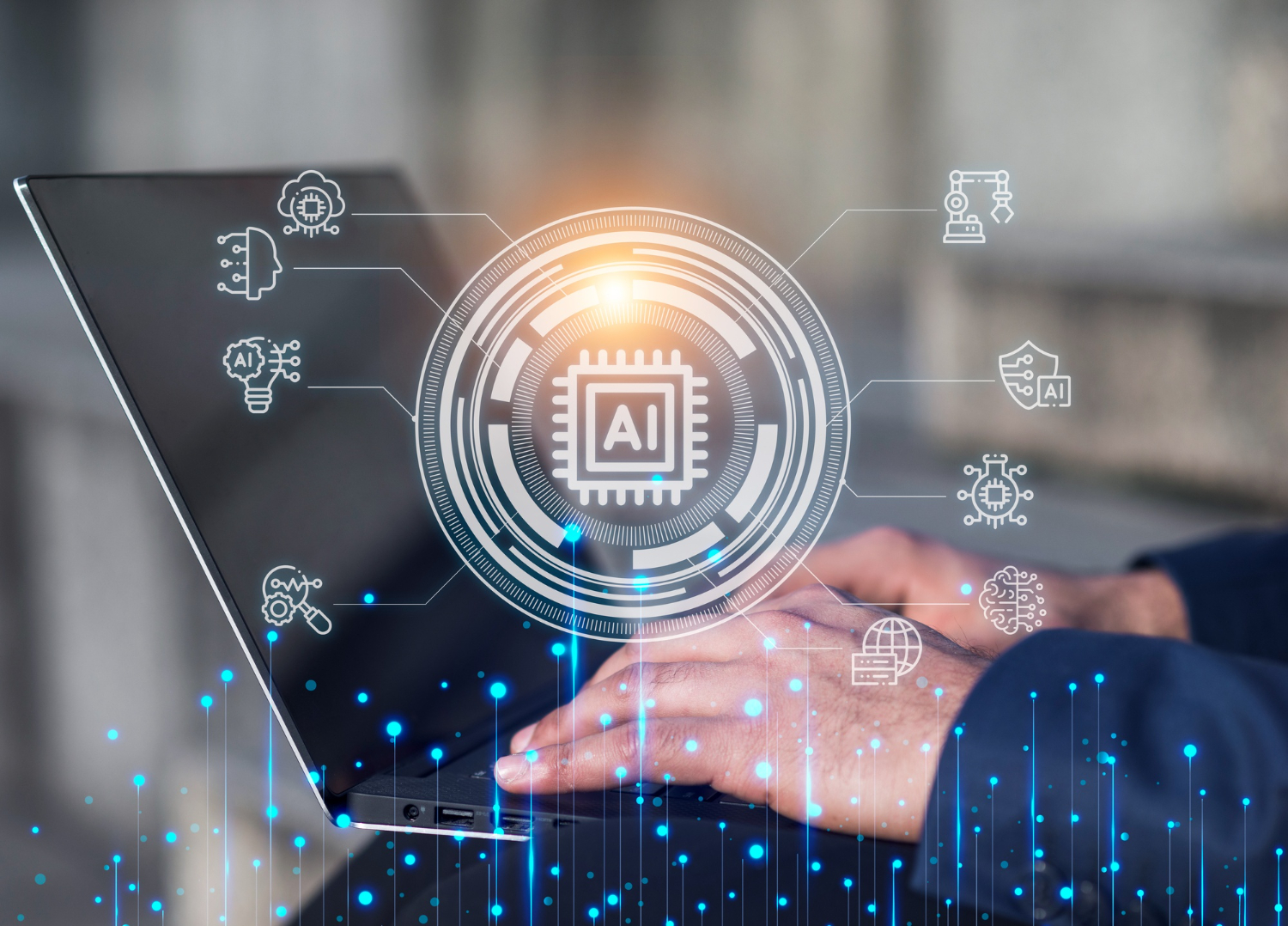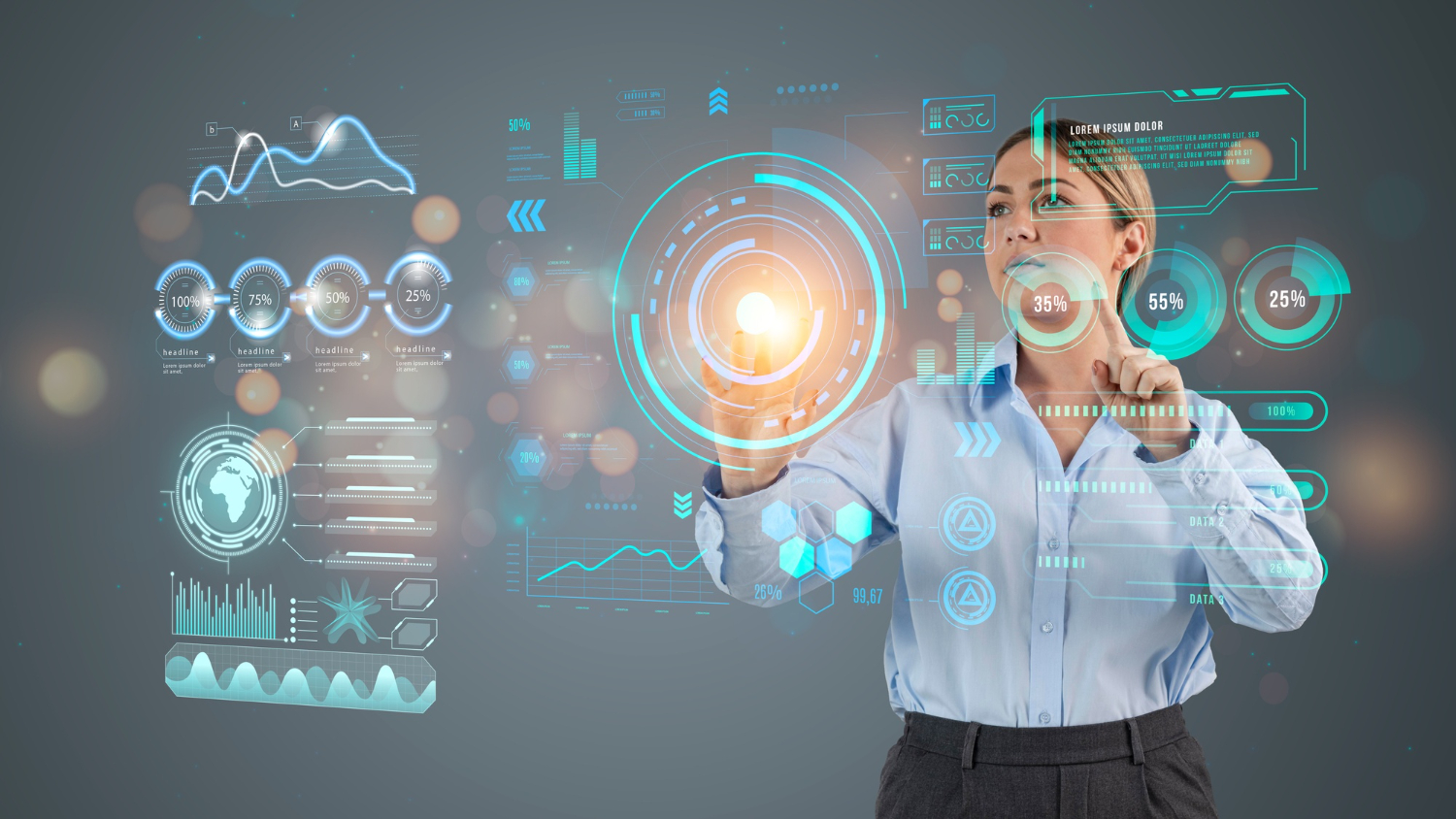
What is AI Analytics?
Did you know that every click, every purchase, and every interaction we make results in the generation of data? In fact, experts predict there will be 463 ZB of data generated every day by 2025. But data on its own has zero power. The insights drawn from it are what matters!
And this is where AI analytics comes into play!
It unlocks the true value of data, turning it into actionable insights that drive innovation, efficiency, and growth. This powerful combination of Artificial Intelligence and traditional data analytics helps businesses forecast trends, governments plan better, and individuals make more informed decisions.
Now, with further ado, let’s explore the intricacies of AI Analytics, from its fundamental definitions to its far-reaching applications. Let’s delve into the real-world impact, the emerging trends, and the exciting predictions that promise to shape the future.
Understanding Analytics
Definition of Analytics
AI analytics is a facet of data analysis that harnesses the power of machine learning to sift through extensive data sets. It helps unveil hidden patterns, trends, and connections. Notably, it operates autonomously, eliminating the need for human intervention. This, in turn, empowers businesses to make informed, data-backed decisions that keep them ahead in the competition.
Analytics is not just about looking at numbers. It’s about unravelling the story behind those numbers. It’s about uncovering hidden opportunities and mitigating risks. This process utilises various techniques and tools, from basic statistics to statistical models and sophisticated algorithms, to extract actionable information from data.
The evolution of analytics from traditional to AI-powered
The world of analytics has undergone a remarkable transformation over the years. It’s evolved from the traditional, manually driven methods to the cutting-edge realm of AI-powered analytics. Traditional analytics focuses on historical data, providing insights into what happened in the past.
AI-powered analytics, on the other hand, is like a crystal ball for businesses. It leverages artificial intelligence and machine learning algorithms to predict future trends, prescribe optimal actions, and adapt in real-time. This evolution has empowered organisations to be proactive rather than merely reactive.
Key concepts in analytics (Descriptive, Predictive, and Prescriptive)
When it comes to analytics, these three concepts are often discussed –
- Descriptive Analytics: This helps us understand what has happened in the past. It provides historical insights, answering questions like “What were our sales figures last quarter?” or “How did customer preferences change over time?”
- Predictive Analytics: With predictive analytics, we look into the future. It uses data and statistical algorithms to make informed predictions. Questions such as “What will our sales be next quarter?” or “Which products are likely to be popular in the upcoming season?” are the domain of predictive analytics.
- Prescriptive Analytics: This is the sage advice of analytics. It not only predicts future outcomes but also suggests the best course of action. It guides decision-makers with recommendations like “To maximise profits next quarter, increase the marketing budget for product X by 20%.
What is AI?

Definition and a brief history of Artificial Intelligence (AI)
Artificial Intelligence, commonly referred to as AI, is the pinnacle of human innovation. It’s the simulation of human intelligence in machines, allowing them to think, learn, and act intelligently. The roots of AI trace back to ancient times, but it truly began to take shape in the mid-20th century.
In 1956, the term “Artificial Intelligence” was coined at the Dartmouth Workshop, marking the official birth of the field. AI’s journey has been a rollercoaster, with periods of rapid advancement and AI winters where progress slowed. But in recent years, AI has been on a meteoric rise, transforming industries and our daily lives.
The role of AI in modern technology
AI is the engine that powers modern technology. From self-driving cars to virtual personal assistants like Siri and Alexa, AI is the invisible force shaping our digital world. It has revolutionised healthcare, enabling early disease detection, and is at the heart of e-commerce, predicting what products you might like. It’s in our smartphones, making our photos better and our messages smarter.
AI has crept into industries like finance, where it automates trading, and in agriculture, where it optimises crop yields. It’s the secret sauce in recommendation systems on streaming platforms, ensuring you always have something intriguing to watch.
How AI differs from traditional software
Traditional software operates based on predefined instructions, like a recipe. It can be incredibly powerful, but it lacks adaptability. AI, on the other hand, learns from data and adapts.
Traditional software can be efficient, but it’s not flexible. AI is flexible, but it requires data and time to learn and improve.
In AI, the code isn’t static; it evolves and gets better with experience. This dynamic nature is what sets AI apart from traditional software, making it a game-changer in the world of business analytics and beyond.
The Fusion of AI and Analytics
Introduction to AI Analytics
AI Analytics is where the power of AI meets the insights of analytics. It’s like having a supercharged analytics engine that not only tells you what happened but also why it happened and what’s likely to happen next. AI Analytics takes data-driven decision-making to a whole new level.
How AI Enhances Analytics
AI enhances analytics by bringing automation and predictive capabilities to the table. It can sift through massive datasets at lightning speed, spotting patterns and anomalies that might elude human data analysts. It’s like having a thousand data analysts working on AI data analytics, around the clock, ensuring you never miss a crucial insight.
Real-World Examples of AI Analytics Applications
In the real world, AI Analytics has transformed industries. Think about personalised recommendations on Netflix, fraud detection in banking, or predictive maintenance in manufacturing. AI Analytics has even made its way into healthcare, helping doctors make more accurate diagnoses and treatment decisions. The possibilities are vast, and the impact is profound.
Types of AI Analytics

Descriptive Analytics
Definition and Use Cases: Descriptive analytics is the storyteller of AI analytics. It not only tells you what happened but also provides a detailed narrative. In business, it’s like reading a comprehensive history book, where you understand not just the events but also the motivations and consequences. It’s used to analyse sales data, customer behaviour, and market trends to gain insights into past performance and make informed decisions for the future.
Examples in Business and Industry: In retail, descriptive analytics can reveal patterns in customer purchase behaviour, helping businesses understand what products are popular and when they sell the most. It’s the tool behind e-commerce giants’ strategies for offering promotions during peak shopping seasons, such as Black Friday, based on historical data.
Predictive Analytics
Definition and Use Cases: Predictive analytics takes you into the future. It’s like having a crystal ball that can forecast what’s likely to happen based on historical data. In healthcare, it’s akin to a medical expert predicting the likelihood of a patient developing a particular condition. It’s used for demand forecasting, risk assessment, and more.
Examples in Healthcare, Finance, and Marketing: In healthcare, predictive analytics can anticipate disease outbreaks, helping authorities allocate resources for prevention and treatment. In finance, it’s used to predict market trends, analyze data, and make investment decisions. In marketing, predictive analytics can forecast customer demand and tailor marketing strategies accordingly, ensuring higher campaign success rates.
Prescriptive Analytics
Definition and Use Cases: Prescriptive analytics is the wise advisor. It not only predicts what might happen but also recommends the best course of action to achieve specific goals. In supply chain management, it’s like having a supply chain wizard that optimises routes, reduces costs, and ensures on-time deliveries.
Examples in Supply Chain Management and Optimisation: In the logistics industry, prescriptive analytics can optimise delivery routes, considering various factors like traffic, weather, and vehicle availability or fulfilment management. It ensures the right packages are at the right place at the right time, cutting costs and improving efficiency.
Benefits and Advantages

Improved Decision-Making
AI analytics is your trusted advisor. It doesn’t just tell you what happened; it predicts what will happen and prescribes the best actions to take. It’s like having a team of experts providing strategic insights around the clock, enabling you to make better decisions with confidence.
Enhanced Data Accuracy and Insights
In the data world, accuracy is king. AI analytics eliminates human errors and biases when analyzing data, ensuring your insights are as sharp as a well-tuned blade. It’s like having a microscope for your data, revealing hidden gems of information that traditional analytics might miss.
Time and Cost Savings
Time is money, and AI analytics knows how to save both. It automates repetitive tasks, cuts down on manual labour, and delivers results faster. It’s like having an efficient assistant who not only works 24/7 but also gets smarter with every task, optimising your resources.
Competitive Advantages
In today’s business arena, those who harness data rule the kingdom. AI analytics is your secret weapon, giving you a strategic edge and competitive advantage. It’s like having a crystal ball in a world of uncertainty, allowing you to stay ahead of the curve and set new trends in your industry.
Challenges and Considerations
Ethical Concerns in AI Analytics
As AI analytics gains more power, ethical questions arise. How do we ensure that AI-driven decisions align with human values? The challenge is to strike a balance between innovation and ethics, ensuring that AI’s decisions are both intelligent and ethically sound.
Data Privacy and Security
Data is the lifeblood of AI analytics, but it’s also a potential vulnerability. Protecting sensitive information and ensuring data security are top priorities. It’s like safeguarding a treasure chest, allowing access only to those with the right keys while keeping it impervious to external threats.
Potential Biases and Fairness Issues
AI learns from historical data, which can carry biases. Recognising and rectifying these biases is crucial to ensure fairness and equity. It’s like ensuring that the referee in a game is impartial, making sure the playing field is level for everyone.
Real-World Applications

Industries benefitting from AI Analytics
AI analytics isn’t confined to a single industry; its transformative potential spans across a spectrum of sectors. Here are some industries where AI analytics has become a game-changer –
- Healthcare: AI analytics assists in disease prediction, personalised treatment plans, and optimising healthcare operations, leading to improved patient outcomes.
- Finance: From fraud detection to stock market predictions, AI analytics empowers financial institutions to make data-driven decisions, manage risks, and boost profitability.
- Retail: AI analytics enhances customer experience through personalised recommendations, inventory management, and pricing strategies, resulting in increased sales and customer satisfaction.
- Manufacturing: It optimises production processes, minimises downtime through predictive maintenance, and ensures efficient supply chain management.
- Marketing: AI analytics fine-tunes marketing strategies by identifying customer preferences, segmenting audiences, and predicting trends, leading to higher ROI on marketing campaigns.
- Transportation: It improves route optimisation, safety, and maintenance of vehicles and infrastructure, reducing costs and enhancing overall efficiency.
Case studies and success stories
To illustrate the tangible impact of AI analytics, let’s delve into a selection of compelling case studies and success stories that vividly demonstrate its practical applications:
- Netflix’s Personalisation Power: Netflix employs AI data analytics to offer viewers personalised content recommendations. Through the analysis of user preferences and viewing history, it tailors content suggestions. This, in turn, leads to increased viewer engagement and satisfaction. Such a personalisation strategy is a pivotal element of Netflix’s global success.
- Amazon’s Recommendation Mastery: Amazon, a retail giant, has mastered the art of product recommendations using AI analytics. The company’s recommendation system analyses user behaviours and purchase history to suggest products of interest. This feature significantly contributes to Amazon’s impressive sales figures and the overall shopping experience for its customers.
- Uber’s Route and Pricing Intelligence: Uber, a leading ride-sharing platform, relies on AI data analytics for route optimisation and pricing strategies. Through constant analysis of data on traffic conditions, ride demand, and other factors, it ensures efficient and cost-effective rides for both drivers and passengers. This data-driven approach has propelled Uber’s growth and competitiveness in the transportation industry.
The Future of AI Analytics
AI data analytics is in a state of perpetual evolution. As technology advances, so does the realm of possibilities. Here are some of the emerging trends and technologies that are shaping the future of AI analytics:
Emerging trends and technologies
- Explainable AI (XAI): As AI systems become more complex, the need for transparency and interpretability increases. XAI aims to make AI decisions more understandable, enabling users to trust and validate the recommendations provided.
- Quantum Computing: With quantum computers potentially processing information millions of times faster than today’s most powerful supercomputers, AI analytics will leap into a new era of speed and complexity. This means analysing vast datasets in real time could become the norm.
- Neuromorphic Engineering: This technology, inspired by the structure of the human brain, promises chips that can process AI tasks faster and with less energy. This could lead to ultra-efficient AI analytics tools, even in small devices.
- AI Ethics and Regulation: With growing concerns about AI ethics, future trends will likely see increased regulation and standards to ensure the ethical use of AI in decision-making processes.
Predictions for the future of AI analytics
- Autonomous Everything: AI analytics will play a pivotal role in enabling autonomous vehicles, smart cities, and more. We can anticipate safer and more efficient transportation systems, as well as smarter urban planning.
- AI Augmented Creativity: In creative industries like content creation and design, AI analytics will assist and augment human creativity. We might see AI-generated art, literature, and music becoming integrated into our cultural landscape.
- Sustainability and Climate Analytics: As environmental concerns grow, AI analytics will help monitor and mitigate the impact of climate change. Advanced predictive models will aid in disaster management and sustainable resource utilisation.
- AI-Powered Education: Personalised learning, adaptive curricula, and intelligent tutoring systems will be facilitated by AI analytics, transforming the education landscape and providing tailored learning experiences for students.
|
Discover the most relevant agencies for your project based on your own specific requirements.
Find an agency!In conclusion
AI Analytics is the compass navigating the data-rich landscape, offering descriptive, predictive, and prescriptive insights. Its impact spans industries, reshaping decision-making, personalising experiences, and propelling innovation.
AI analytics is significant in this data-driven world, its acts like a compass that helps us navigate the digital landscape with ease. As we move forward, it is crucial to note that AI analytics is more than just a too. It is a transformative force that is urging us to explore, adapt and embrace a future where data will be the key to progress.
If you are looking for assistance with AI analytics, scan Sortlist’s archives to immediately get connected with industry experts.





